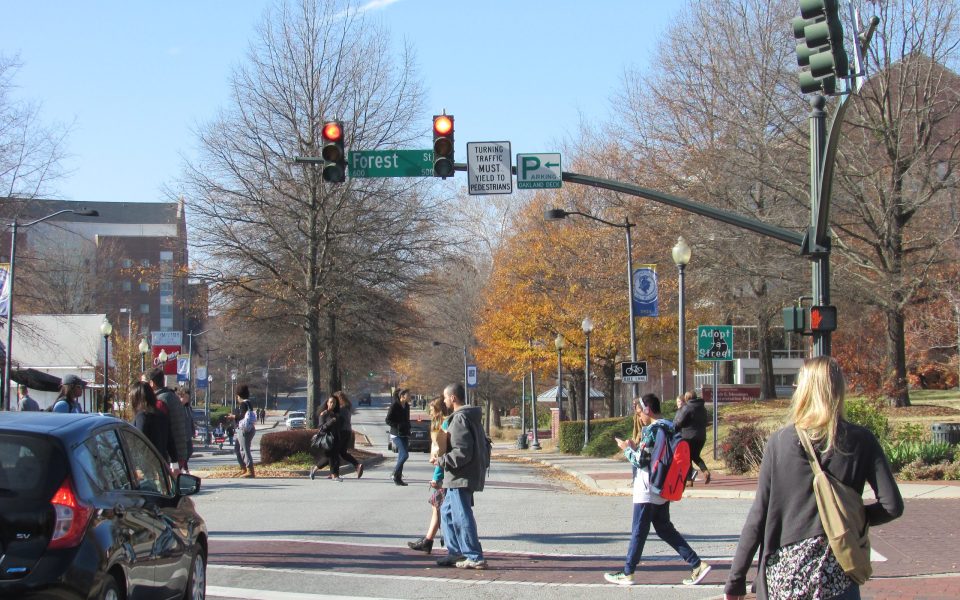1. Greensboro
Colleges and universities provide an unalloyed benefit to cities: Their research facilities drive innovation, most notably hospital systems that provide the backbone of employment for their communities. They provide relatively high-wage employment. Their cultural and arts programming enriches their host communities. Their students create demand for good and services. Of course, how well cities leverage the asset makes a big difference, but aggregate student population provides at least a crude measure of a city’s vitality. Among the Triad’s three cities, Greensboro holds a significant advantage when it comes to college population, with about 40,000 students. UNCG, with about 19,000 enrolled, leads. NC A&T University, the largest HBCU in the nation since 2014, contributes 11,150 students. GTCC’s east Greensboro campus throws 5,000 into the pot. Guilford College (1,776), Greensboro College (1,000) and Bennett College (400) fill out the balance.
2. Winston-Salem
In contrast, Winston-Salem has a relatively small student population, with aggregate enrollment of about 27,500. Of those, Forsyth Tech claims 11,477. Among local institutions that provide four-year and graduate degrees, Wake Forest University holds the dominant position with 7,968 students. Winston-Salem State University, also an HBCU, has 5,107 students. UNC School of the Arts (1,305), Salem College (1,100), and the lesser-known Piedmont International University (740) account for the remainder. Winston-Salem’s university population is comparatively isolated, but its major institutions are shifting focus towards downtown to promote student engagement with the city. Wake Forest leases classroom space in the Innovation Quarter, which also hosts the Center for Design Innovation, a multidisciplinary collaboration between WSSU, UNC School of the Arts and Forsyth Tech.
3. High Point
Nido Qubein had led High Point University through an explosive growth in enrollment since his appointment as president in 2005, from 1,450 to 4,500 students. HPU now accounts for the majority of the city’s college population — less than 8,000 total. GTCC’s High Point campus contributes 3,000. The current enrollment for the struggling evangelical institution John Wesley College is 150, according to the Winston-Salem Journal, and it is undergoing a merger with Piedmont International University, so its future footprint in High Point remains unclear. One of the city’s top priorities is increasing its millennial population — a goal likely to be aided by Qubein’s $50 million commitment to support an events center, children’s museum and free educational movie theater around the proposed downtown stadium.
Join the First Amendment Society, a membership that goes directly to funding TCB‘s newsroom.
We believe that reporting can save the world.
The TCB First Amendment Society recognizes the vital role of a free, unfettered press with a bundling of local experiences designed to build community, and unique engagements with our newsroom that will help you understand, and shape, local journalism’s critical role in uplifting the people in our cities.
All revenue goes directly into the newsroom as reporters’ salaries and freelance commissions.


Interesting article about students in Triad cities. But you fail to mention the QUALITY of the various institutions. In this case, Winston-Salem is clearly the winner . . . with Wake Forest University and its highly-ranked medical school.